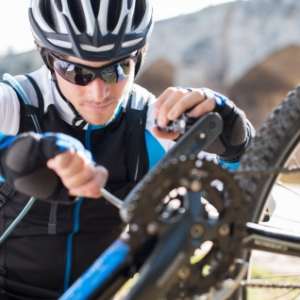
These questions are obvious and simplistic - and thus are routinely ignored by most new bike buyers. Do yourself a favour and really think about your answers. And be as honest as you can. Try not to romanticise your intentions.
What kind of riding will I do?
Notice that we didn't say, "What kind of riding do I want to do?" We all dream of adventures in the woods, carving along winding mountain roads and descending slick-rock.
Get real! If you're going to spend most of your time on beachfront boulevards, you want a more upright, comfortable position and tyres that are fatter than slick road hoops but with minimal or no knobs.
Are you really going to race regularly, or maybe just once? Don't just imagine your riding generally. Focus on a specific event, too - something you could imagine yourself dedicating the whole riding season to, such as a specific fun ride or a three-day singletrack adventure.
How much riding will I do?
This helps determine how durable your bike needs to be. If you're going to rack up a lot of mileage, you want road components that are at least the quality of Shimano Tiagra or Campagnolo Veloce.
Off road, you want at least Shimano Alivio or SRAM 5.0. If you're only going to ride two to three times a week around your neighbourhood or on easy roads, lighter-wear components are fine. What's my Riding History? If you've never ridden a lot, the idea is to start off with the most neutral platform possible - so you can easily branch off later into the kind of cycling that most interests you.
For instance, if this is your first good bike but you know you'll spend most of your time on the road, you should go for a 6 at-bar road bike.The position is more upright, so you don't have to commit to the core-roadie positioning of drop bars, but you're also not committed to the wide tyres and generally heavier weight of entry-level mountain bikes.
As you ride more, you can determine if you enjoy being on the road and going fast (so you'll want to upgrade to drop bars), or just scooting along on the road (in which case, don't change a thing), or if that six at bar keeps tempting you to pop wheelies or take sidetracks into the woods (go for a mountain bike).
Similarly, if you know you want to ride dirt but don't have much experience, make sure the shop understands you want a bike that will let you try a little of everything - dirt-road cruising, noodling around with drop-offs and log jumps, pavement hops, the works.
Sketch yourself
Grab a pencil, paper and some brutal honesty. Now make two lists. The first is an inventory of your current status as a cyclist or, for first-timers, your fitness level: how competitive you are, how much time you spend riding (or working out) each week, your highest achievements on a bike.
The second is your ultimate vision of yourself as a cyclist: completing multiple charity rides each year, kicking butt on the local race circuit, riding to work every day, and so on.
Then, imagine a rider who fits between the two – the bike that’s right for that middle-ground is the minimum you should purchase. Buy below that level, and you won’t have enough room to grow.
Get on the horn
Look up the bike shops closest to you. Convenience isn’t the deciding factor when choosing a shop, but the ideal shop is one that’s easy to reach. Then call at least two or three of them.
Note what brands the shop carries. Ask whether the shop specialises in a particular bike style – if you’re looking for a road bike and the shop carries mostly mountain bikes, it’s probably not a good fit. Also, ask what kind of service plan the shop offers on a new bike purchase; a year of free tune-ups is a good starting point.
Click and read
Browse the Bike Buyers’ Guide for your chosen brands. Study frame materials, components (wheels, derailleurs and cranks etc) and price, if it’s listed.
A model line will often have the same frame, with more expensive wheels and parts as the bike prices go up. Frames last longer than components, so we generally recommend investing in a higher-quality frame worthy of parts upgrades later, if need be.
Tap the locals
Ask your cyclist friends what they like and don’t like about their current bikes; you can judge by their riding style whether you should have the same concerns.
Also, ask for opinions on local shops or the bike models you found on the Internet. If you don’t know many cyclists, email a local cycling club. Bonus: You’ll have people to ride with when you have your new bike.
For more articles on cycling, mountain biking and bicycling equipment visit Bicycling Magazine.
This is an edited version of a story that originally appeared in Bicycling Magazine.




 Publications
Publications
 Partners
Partners









